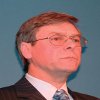Global information for international audience
22 December 2005Llandudno, on the coast of north Wales, once again supplied unseasonably warm, and dry, spring-like weather as over 100 delegates assembled from 28 countries at the North Wales Conference Centre for the three days of the ninth EPPS.
They came from South East Asia, Japan, China, Africa, the Middle East, Australia and New Zealand, North and South America and all areas of Europe to learn about the latest developments in five sessions covering: OSB; Technology; Challenges for the industry; The built environment; and Fundamentals.
Encouragingly, this year more than 25% of those delegates were there representing panel manufacturing companies – an increase on previous years as this symposium becomes increasingly popular for its mix of scientific, technical and more ‘commercial’ presentations.
Opening the symposium, Dr Paul Fowler, head of organisers the BioComposites Centre of the University of Wales, Bangor, reflected on a rather tumultuous year for his organisation, due to redevelopment of buildings at the university.
“We’ve moved offices and are currently engaged in a major capital project to reinvigorate our flagship MDF pilot line in a new facility on the island of Anglesey.We also plan an engineered wood products test plant at the same location,said Dr Fowler.
He also informed delegates of the installation of a multi-purpose reactor vessel at the Anglesey base to carry out resin development and to scale up resin process improvements from the laboratory.
“In more general terms, the formaldehyde question remains and we are working on formaldehyde-free bio-based resins with performance to equal petrochemical-based resins.
“The EC Incineration Directive – to burn or not to burn – is an important topic too. Should we as an industry be lobbying to ban the [indiscriminate] burning of wood products?”.
Making a welcome return as keynote speaker was the former head of the BioComposites Centre (he left five years ago) and now with Ensis in Australia, Dr Jamie Hague.
“Ensis is a trans-Tasman team joint venture led from Victoria, Australia combining Australia’s CSIRO (Commonwealth Scientific and Industrial Organisation) and Scion, which is the trading name of the New Zealand Forest Research Institute.
“The joint venture is a combination of Australasia’s two leading forest research agencies’ talents and resources,said Dr Hague. “It is a world-scale operation, not just operating in Australasia, with 325 scientific and technical staff. It is the doorway to the entire CSIRO and Scion network of research.”
Looking at the major challenges facing the wood processing industry, the speaker highlighted resource quality and variability, the product development cycle (longer than it is for steel, plastics and concrete) and environmental impact, particularly with regard to preservation treatments and volatile organic compounds (VOCs).
“It takes 25 years to know if you got your tree breeding right and about 10 years to test wood protection systems,pointed out Dr Hague, who also highlighted product robustness and changing consumer expectations as challenges to be faced.
Looking at the future prospects for engineered wood products or EWPs (in which he includes all panel product types as well as LVL), the speaker said that he felt Australasia has an uncertain future, with further rationalisation likely and he cited the imminent takeover of Carter Holt Harvey especially affecting particleboard.
He also suggested that China’s MDF capacity would present tough times and a big threat for the industry.
“Probably the most uncertainty surrounds the future of the MDF industry, in particular that located in New Zealand,said Dr Hague. “The industry infrastructure is ageing, with few prospects of investment in the near future.
“LVL appears to have a solid future and the plywood industry will likely survive for a number of years.”
Dr Hague said that, in contrast to the Australasian industry, he felt that the global EWP industry potentially has much better prospects.
“The forest industry worldwide faces a number of major challenges. Key issues that remain to be addressed going forward are environmentally acceptable methods of imparting durability to products, minimis-ing or eliminating the emission of formaldehyde and other potentially harmful VOCs from products and reducing or eliminating the dimensional instability of reconstituted products – that is, the supply of products with consistent, guaranteed properties,concluded the keynote speaker.
Session 1, simply titled ‘OSB’, was opened by Robert Loth, owner of wood size-reduction machinery maker B Maier of Bielefeld, Germany.
Mr Loth explained how he felt that the use of his company’s new high-speed knife ring flaker and improved cleaning and screening systems to replace hammer milling could be employed to reduce costs while improving board quality in particleboard, with particular reference to the use of recycled wood.
For screening and cleaning, Maier’s system separates the chip flow into five fractions: 0-4mm for burning, 4-8mm bypassing the knife ring flaker to prevent jamming in the flaker, 8-25mm micro-chips, 25-50mm macro-chips and over 50mm to oversize bin.
“The macro-chips are the ones in which the knife-ring flaker produces optimal flakes with high capacity and low energy consumption,claimed Mr Loth.
The company’s new knife ring flaker has 60 knives instead of the more common 48, a specially developed knife angle and a clear relief angle as well as improved flake flow to produce undamaged flakes and to reduce flaker wear, said the speaker, who also discussed Maier’s unique heavy particle separator incorporating a non-ferrous separator.
Mr Loth said that his two-stage flaking system could produce OSB flakes from all kinds of wood raw material, including recycled, and that he had successfully produced 16mm OSB board in industrial scale tests.
The next speaker was Dr Terry Conners of the University of Kentucky, whose presentation title was ‘The influence of knife angle and ambient temperature on fines generation from knife flakers’.
His research was carried out at a southern pine OSB mill in the US and was concerned with reducing fines for two main reasons: to improve board quality, while increasing production and wood utilisation; and to reduce VOC emissions from dried wood particles.
He found that fines generation could be significantly reduced at the flaker by adjusting sharpness angles as ambient temperature varies.
The reason for these findings is not yet fully understood, admitted Dr Conners, and further research is underway to determine the underlying mechanism.
An interesting paper, which offered the possibility to expand the range of end-uses of OSB into non-commodity areas, was presented by Steffen Tobisch of the Institute for Wood Technology (IHD), Dresden.
Traditionally, moulded furniture parts have been produced from veneer-based products, but what if OSB could replace plywood here as in many other applications?
Dr Tobisch reported success in postmoulding OSB panels in a two-step process by using resin systems which were not fully cured in the first pressing. This involved a mix of thermoplastic and thermosetting adhesives.
The results were successful and the speaker added that coating during the moulding process – with veneers for example – was also possible.
Next, Paul Bertheras of Mobius Technologies offered a novel use for waste polyurethane foam. He showed that, when mixed with pMDI binder, finely ground PU foam can be used in the bonding system for particleboards.
This not only provides a use for scrap polyurethane foam from trimming at the production sites, as well as cleaned postconsumer scrap foam, but also reduces pMDI consumption.
Promising laboratory results at 10% substitution suggest larger scale tests are worthwhile to determine optimum levels of addition of PU powder to pMDI binder in order to maximise cost reductions, said Mr Bertheras. This may be up to 15 or 20%, he claimed.
On- and off-line characterisation of the structural properties of OSB was the subject of Burkhard Plinke, Fraunhofer WKI, Braunschweig, Germany.
“The quality parameters of OSB are surface homogeneity, density distribution inplane and surface evenness and these are affected by flaking, mat forming and pressing,explained the speaker.
He then outlined on-the-line mat monitoring by CCD camera with images processed by StrandSize software.With the use of other additional software, orientation angle and ratio can now be continuously monitored and used for process optimisation, said Mr Plinke.
Thermographic inspection of density distribution behind the press and surface topography measurement of the evenness of OSB surfaces were also reported, together with statistical analysis of strand shape parameters. The latter analysis shows the influences of drying and transport processes.
Session 2, ‘Technology’, was kicked off by Jörg Hasener of Fagus-GreCon Greten of Alfeld, Germany.
He described the GreCon equipment available for online ultrasonic measurement for real-time quality control and process optimisation and the company’s new ct- Concept.
‘Service concept for preventive and oncondition maintenance’was presented by Trajan Sandweg of Siempelkamp Maschinen und Anlagenbau, Krefeld, Germany.
Mr Sandweg explained how Siempelkamp’s Prod-IQ process control system has been adapted to a web-based system Prod-IQ.maintenance to allow for the use of process data as a maintenance trigger, with the system receiving information from sensors on the actual state and wear of each sensor-monitored component. This replaces run-to-failure maintenance and periodic preventive maintenance with predictive (on-condition) maintenance, thus reducing downtime and maintenance costs, said Mr Sandweg.
The next speaker was Matthias Fuchs, technical director of Electronic Wood Systems (EWS) of Hameln, Germany.
Pointing out the disadvantages of overor under-drying the raw material for panel production to both quality and economy of manufacture, Mr Fuchs reviewed three possible systems for moisture measurement: non-contact infra-red; microwave; and resistance-based systems. He also described a new laboratory moisture measurement method employing a dual microwave sensor head with automatic compensation for changes in density and temperature.
The final presentation of the first day of EPPS was given by Lars Karlsson of Tri Innovations AB (TRIAB) of Sweden. ‘Powder coating in the MDF industry’ covered the use of ultra-violet-cured (UV) and ultra-low bake (ULB) application systems.
He explained that UV coating involves melting and curing in separate steps, while ULB is a process of thermosetting/melting, with curing being a product of time and temperature.
The former produces a hard surface suitable even for worktops, while the latter process is more suited to vertical/lower wear applications, he said. Heat impact in ULB can cause problems of cracking in the MDF substrate and in all cases, the internal and surface quality of the MDF is critical.
Day two, session 3: ‘Challenges for the industry’ was opened by Dr John Sharp, who reported on his Advance Resin Technology (ART) for low-emission panels.
He summarised the problems with traditional UF resins, which he claimed have not kept up with other panel production advances and have not been sufficiently predictable in their reactions.
“When using often poor quality and highly variable wood raw material with resultant swings in furnish moisture content etc, the press operator is usually working close to or on the edge. The last thing he needs is variations in the resin as well,said Dr Sharp. “A radical re-thinking of UF resins was needed.”
Dr Sharp’s ART process is designed to make the resin behave predictably.
“By controlling the process strictly on a time basis throughout the batch production, and by imposing conditions on molar ratio, temperature and pH, the resin has no alternative but to follow a particular, preordained, chemical pathway – it goes where it is told to go,he said.
Firstly, he sought out more efficient resin performance and secondly he fixed the reaction pathway “so that every time we want to make a particular resin, it will come out exactly the same way. This is ART – a whole new philosophical approach to resin making.”
The next speaker, Stephen Young of TimberTest Laboratories of New Zealand, who also had a booth in the Forum at the symposium, asked: “Formaldehyde emission from solid wood – will it become an issue?He followed this question with another, related one: “Is there a monster in the forest?”
He tested the formaldehyde release from radiata pine (the mainstay of the New Zealand forest products industry) with Norway spruce and Douglas fir for comparison and concluded that air dried radiate pine gave similar formaldehyde emission to wood from seven other tree species and that results after air drying for all samples was less than a third of the Japanese F**** limit. Sixteen days after high temperature drying, emissions were close to that limit but within one month, reduced to about a third of it.
“There is no monster in the forest,concluded Mr Young, no doubt to everyone’s relief!
Continuing the emissions theme, Mathias Makowski of BFH, Hamburg, Germany, reported on ‘Influences on VOC emissions of wood based panels’. His work related to OSB.
He found that hot stacking lowered emissions of terpenes, while aldehydes are formed after manufacturing and reach their highest level during stacking, and then decay.
The next presentation was by George Goroyias of Jaakko Pöyry Consulting which, with its sister company ILEX Energy, looked at the implications of bioenergy for the panel industry with regard to the Renewables Obligation.
“The panel industry is the largest consumer of recycled wood, using more than 80% of the current supply, while 180,000 tonnes is used as biofuel by the energy industry,he said.
Dr Goroyias concluded that, at this early stage of biomass energy development, accurate predictions are difficult, but it is clear that the energy sector could become a significant consumer of wood based and other materials.
Session 4, the built environment, offered three presentations. The first was by professor Michael Benfield on Timber Frame Futures, related to the UK market. He said that the UK Timber Frame Association predicts that 23% of all housing will be timber frame by 2007 (in 1990 it was 5%).
“Timber satisfies the environmental needs of sustainability and is therefore becoming promoted as the preferred material for environmental construction,said the speaker.
“Perhaps it would be wise for manufacturers and suppliers to become more proactive, partnering members of the overall construction supply chain.”
‘High precision machining of MDF composites’ was presented by Dr Mark Luty, a mechanical design engineer who had tried to build a modular pre-finished housing system using various MDF composite panels.
He concluded that improvements to MDF quality were required and that an MDF/HDF/MDF composite panel was needed, together with a technique which could increase the density of the panel joint interfaces.
Dr Mizi Fan of the Building research Establishment (BRE) in the UK concluded the session with a report on his work on edge-wise load performance of panels.
The final half-day of EPPS 9 brought session 5: Fundamentals.
The first presentation, by Jo Mattheij of DSM Melamine, was on the instability of MUF resins. He concluded that it is possible to develop ultra-stable MUF resins by adjusting pH and controlling optimum condensation times.
Next came ‘Optimisation of wood based panel properties by heat pre-treatment’, by Wulf Paul of BFH.
The objective was to improve thickness swell and weathering characteristics of panels for use in exterior applications. Mr Paul found that heat pre-treatment of particleboard chips did give improved thickness swell and absorption behaviour with good technical properties too. Reduced strength of the chips was compensated by the use of pMDI adhesives and Mr Paul said that the process was also suitable for the manufacture of OSB.
Professor Joseph Tesha of the University of Dar Es Salaam, Tanzania, returned to EPPS for his third presentation (previous ones were in 2000 and 2001) and reported on his work on the effectiveness of both steam and alkali treatments of rice husks used in particleboard manufacture in improving adhesion.
He found that alkali treatment improves the internal bond strength and flexural strength by partial removal of impurities from the rice husk surface, as long as alkali concentrations were below 2%. Steam treatment also improved mechanical properties by 30 to 300%.
Dr Milan Sernek from Slovenia looked at the influence of press temperature on curing and strength of MUF bonds and found that increased press temperature accelerates the curing process and shear strength, allowing reduced pressing times.
The final presentation of this year’s symposium was given by Kristoffer Segerholm from the Royal Institute of Technology, Stockholm, Sweden, on wood-plastic composites made from acetylated wood and its effects on water vapour absorption behaviour and durability.
Delegates left Llandudno with a wealth of information to take back to their daily working lives in their far-flung homelands. Whether those delegates came from universities, equipment suppliers, resin makers or panel manufacturers, they must all have learned a lot of useful things during the two-and-half day symposium, as well as establishing lasting contacts and networking opportunities with others in the industry. Next year, EPPS will celebrate its 10th edition (October 11-13, 2006).



